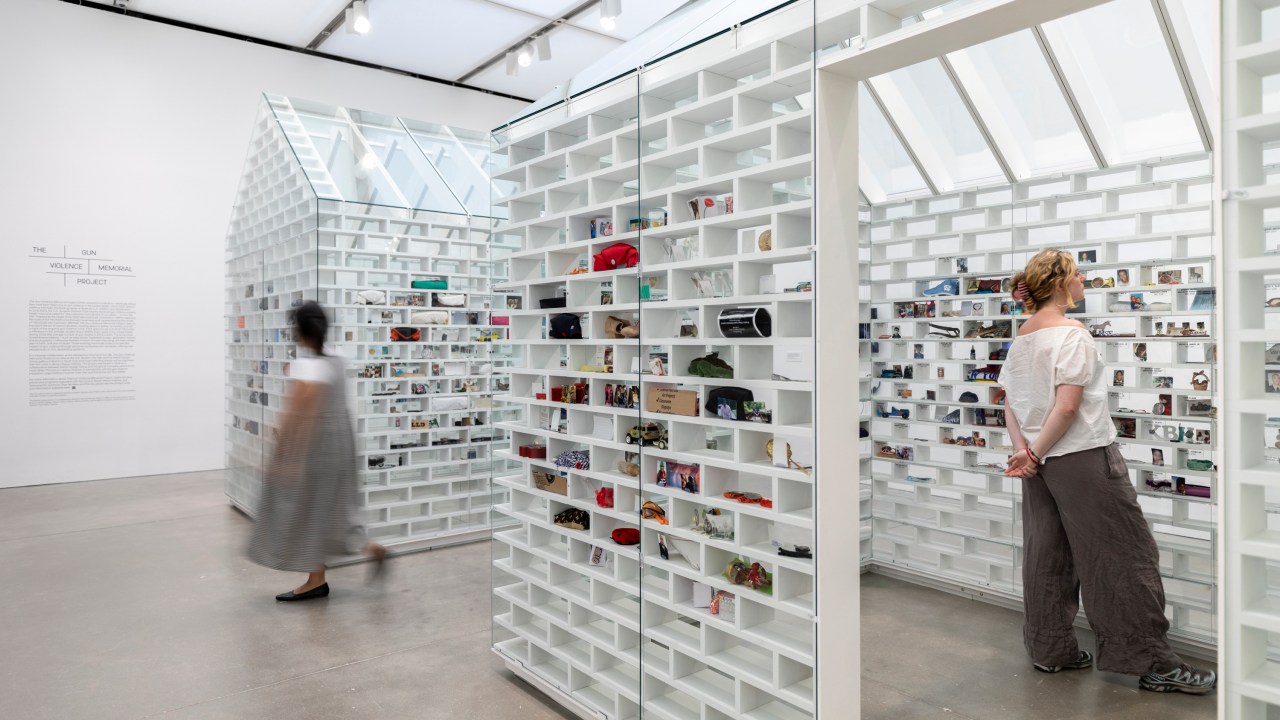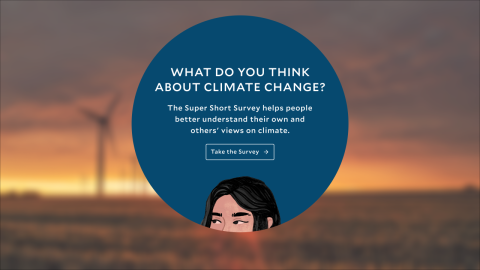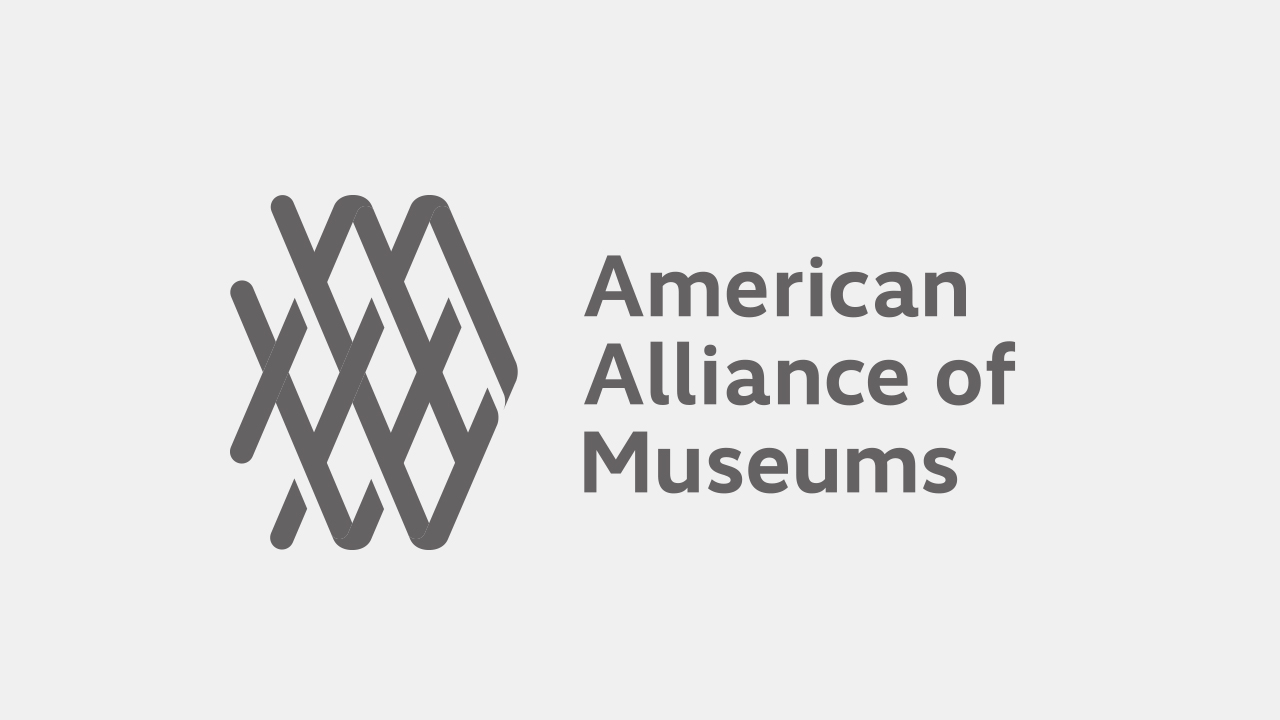
This op-ed first appeared in the journal Exhibition (Spring 2025) Vol. 44 No. 1 and is reproduced with permission. If you don’t read the journal, become a member to receive your copy of the full upcoming issues or purchase the Spring 2025 issue.
Design is a powerful tool for embedding history and public memory into our built environment. Through memorials, museums, and exhibitions, stories are made visible and accessible, shaping how communities understand the past and imagine the future. These are opportunities to create moments that are transformative, using space to foster empathy, inspire action, and drive positive change.
Too often as designers we consider our involvement only in certain phases of a project—we enter at one juncture, and then after the design finishes, our work is considered “done.” Yet true transformation happens when there is opportunity for a prolonged relationship, rather than a finite interaction or moment in time. For a designer, this may mean staying involved with a project after it’s open or exploring opportunities for the exhibit to evolve over time, as necessary. It means creating ways for visitors to stay connected, involved, and active, even after they’ve left an exhibition.
These moments of engagement in exhibitions often take the form of a Call to Action through interactive design elements that encourage visitors to participate, contribute, or engage in a meaningful way. Sometimes this is a prompt that encourages visitors to take a tangible step after they leave the exhibition, connecting the themes to real-world impact. The action may be personal or collective, immediate or rippling.
As designers urging participation, we want to offer these questions:
- What is our responsibility when we invite visitors to take action or join a movement?
- Whose responsibility is it to ensure accountability and follow-through?
- How do we design spaces that not only inspire engagement, but also sustain it?
This essay explores two projects by MASS: a traveling memorial in the United States and a permanent exhibition in Rwanda. While very different, each project demonstrates how a Call to Action, when embedded in the foundational elements of each design, can prompt visitors to take action in their own lives beyond a museum’s walls.
Project 1: The Gun Violence Memorial Project
In April 2018, at the opening of the National Memorial for Peace and Justice in Montgomery, Alabama, Pamela Bosley and Annette Nance-Holt—founders of the survivor-led advocacy organization Purpose Over Pain—approached members of MASS and artist Hank Willis Thomas with a challenge: What America needs next is a memorial to victims of gun violence.
It was a powerful idea that could not be ignored. For Thomas, the project was deeply personal—his cousin, Songha Thomas Willis, was killed by gun violence in 2000. Shortly after this conversation, MASS Design Group and Thomas began developing a memorial concept. The Gun Violence Memorial Project opened at the 2019 Chicago Architecture Biennial, with partners Purpose Over Pain and Everytown for Gun Safety. Over the last five years the memorial has traveled to Washington, DC, where it was displayed at the National Building Museum for two years, and to Boston, Massachusetts, in 2024, where it was exhibited at three locations: the Institute of Contemporary Art, Boston City Hall, and the MASS Design Group office. In 2025, the memorial will continue its journey to the Museum of Contemporary Art, Detroit.
The memorial aims to move visitors from awareness to action by bridging two perspectives simultaneously: the overwhelming scale of daily gun violence and the personal connection to individual lives lost. The project was designed to go deeper than the statistics shared by the media. “I want you to see who my son was,” said Pamela Bosley, mother to Terrell Bosley, who was shot and killed in 2006.
The memorial consists of four glass houses, each constructed from 700 glass bricks—an amount chosen to acknowledge the number of people killed by guns in the U.S. every week in 2018, and sadly a number that continues to rise.[1] The glass bricks contain objects belonging to victims of gun violence donated by the victims’ families (fig. 1).

The memorial was designed as a participatory process built through a framework of co-creation: families contribute personal objects belonging to loved ones lost to gun violence, making the impact tangible and deeply human. The collection events have become an integral part of the memorial itself, acting as moments of storytelling, healing, and collective remembrance. The memorial is quite literally built from the objects donated by families, imbuing the memorial with humanity.
The Challenge of Inspiring Action
The broader goal of the project is to create a space for collective remembrance and raise awareness around the gun violence epidemic in America. We defined our Call to Action as increased activism and community-building among survivors and advocacy groups—wanting to create an avenue for memorial participation that is trauma-informed, accessible, and survivor-driven. In simpler terms, we want to offer this prompt for audience members after leaving the exhibition: What do you see as your role in ending gun violence?
The memorial has provided families with a space for remembrance—a place to grieve, honor their loved ones, and share their stories with a broader audience. Family members are invited to commemorate their loved one by selecting objects that speak to their personality, interests, and passions (fig. 2).
The design team incorporated exhibition elements such as a documentary film featuring interviews with families to highlight the profound and far-reaching impact of gun violence on individuals, communities, and our nation.

However, designing a memorial for an ongoing crisis like gun violence presents unique challenges. Unlike a historical memorial that marks a closed chapter or a specific moment in time, this project confronts a reality that is still unfolding. How can we heal from an ongoing harm? How can a traveling memorial serve as a catalyst for tangible action? We have found that the answers continue to evolve as we listen to families, community organizations, and visitors who interact with the space.
It was essential for our team to lean into the notion that we are spatializing a number that is not finite, and in this way our work as designers is simply never done. The design establishes a framework, but the project must evolve in every location. It remains imperative in each hosting city that local institutions, families, and community partners are able to adapt the memorial to local audiences and visitor contexts. The work must be responsive, morphing over time.

As designers, we carry the responsibility to shape the future by honoring the past, reflecting the present, and envisioning new possibilities. So, yes, The Gun Violence Memorial Project is not just a static monument—it is an evolving, traveling space that adapts and grows with the communities it serves. By embedding healing into the very fabric of its design, the memorial empowers individuals to share their stories, amplify their voice, and spark a shift in our national dialogue (fig. 3).
The power of the memorial lies in its ability to hold space for grief while inspiring action. It serves as both a personal tribute and a public reckoning, urging visitors—whether directly impacted or not—to reflect upon their role in addressing gun violence, all within the context of their city. As the project continues to travel and evolve, the challenge remains:
How do we ensure the exhibition remains adaptive, so that remembrance can lead to change?
Project 2: The Conservation Gallery at the Ellen DeGeneres Campus of the Dian Fossey Gorilla Fund
The Dian Fossey Gorilla Fund is the world’s largest and longest-running organization dedicated entirely to gorilla conservation. Its work began in 1967 with the founding of the Karisoke Research Center by Dr. Dian Fossey in Rwanda. For over 50 years, the organization conducted its scientific research from a series of rented buildings near Volcanoes National Park in Kinigi, lacking a permanent home.
A core part of the Fossey Fund’s mission is to train and empower the next generation of African scientists in conservation. Historically, research on African wildlife and ecosystems has been dominated by Western scientists, but the Fund is committed to shifting this paradigm. Each year, it hosts hundreds of Rwandan university students and thousands of primary and secondary students, fostering local leadership in conservation efforts.
In 2022, the Fossey Fund moved into its first permanent home—the Ellen DeGeneres Campus of the Dian Fossey Gorilla Fund—located at the base of Volcanoes National Park (fig. 4). Spanning 12 acres, the purpose-built campus designed by MASS includes classrooms, laboratories, student housing, a 4,000-square-foot permanent exhibition, and community spaces designed to deepen visitors’ engagement with local residents and conservation efforts. With this new campus, the Fossey Fund is better equipped to protect and study gorillas, train African conservationists, and strengthen the ecological resilience of surrounding communities.

The Conservation Gallery is a public-facing space that offers an in-depth look into the life and legacy of Dian Fossey, the gorillas she studied, their habitat, and the impact of human activity on their survival (fig. 5). For the Fossey Fund, it was essential to create an educational environment that tells the story of gorilla habitat conservation, fostering scientific understanding of the species and their broader needs and environment. The curatorial and project team recognized that achieving their broader goal—inspiring lifelong conservation activism—would require instilling a deep sense of empathy in visitors, using the gorillas as the entry point.

This approach was inspired by Dian Fossey’s method of “Breaking the Boundary,” the process through which she gradually gained the trust of gorillas. She began by keeping her distance, then moved closer, mimicked their behavior, and ultimately integrated herself into their world. This approach shaped the design of the exhibition, guiding visitors through a gradual transformation—from observer to engaged participant.
The exhibition unfolds in three key chapters: Dian’s World, Gorillas and You, and Modern Conservation. Each section uses immersive, multimodal storytelling to honor Dian Fossey’s legacy while sharing the rich stories of the mountain gorillas that the Fossey Fund has studied for over 50 years. Through materiality, design motifs, and interactive components, the exhibition is crafted to cultivate empathy, forge connections, inspire action, and ultimately empower visitors to make a difference. The overall experiential arc moves visitors from curiosity to understanding, then to engagement, inspiration, and, finally, empowerment. Elements of the exhibition are strategically revealed over time, mirroring the way gorillas gradually revealed themselves to Fossey.
In Dian’s World, visitors step into a recreation of the cabin where Fossey lived, where they are surrounded by her voice, field recordings, research materials, and personal artifacts—including her actual desk. The Gorillas and You zone shifts the perspective, allowing visitors a more up-close view of the world through the gorillas’ eyes. Through exhibition techniques such as virtual reality, an interactive Gorilla Voice Kiosk that invites guests to mimic gorilla vocalizations, and a 360-degree theater showcasing footage from a gorilla’s point of view, visitors gain a more profound understanding of the connection between gorillas and humans (fig. 6). This section serves as the peak of the exhibition’s “empathy arc,” encouraging visitors to recognize that gorillas, like humans, experience complex social dynamics and face preservation challenges in their ecosystem.

Finally, the Modern Conservation section highlights the people working on the front lines of conservation. Designed as an active space for discovery, it invites visitors to step into the roles of tracker, scientist, or community activist. A hands-on science table allows guests to engage directly with ongoing Fossey Fund research and explore how emerging technologies are advancing gorilla conservation (fig. 7). The goal is to leave visitors with a deeper understanding that conservation is a complex, community-driven effort—and that they, too, can play a role.

Translating Empathy into Action
The design team worked to embed meaningful opportunities for visitors to turn empathy into action. It is empathy that calls on our humanity to live up to our responsibility. Just as Dian Fossey changed the world’s perception of gorillas and sparked a global movement to protect their habitat, the exhibition aims to inspire visitors to take their own steps toward conservation. The team at the Fossey Fund shared that they wanted to design an experience that encourages visitors to make a connection between what they feel and learn and their own personal lives and provide an opportunity for visitors to visualize their commitment to conservation activism.
The Call to Action component, a digital quiz titled What Kind of Game Changer Are You? encourages guests to identify specific ways they can stay connected to the Fossey Fund’s work after they leave. Visitors are prompted to take the quiz, which identifies the gorilla they are most like based on a series of questions, and from there, what types of conservation activism might be of interest to them. In addition, the design team wanted to feature a visualization of these commitments—something to illustrate how many people before them participated in the Call to Action. Ultimately, this included a place to take a photo to be shared publicly.
How do we measure the success of the Call to Action element? We can track pledges, commitments, and visitor engagement with conservation efforts. But how do we assess something as profound as empathy? How do we determine whether visitors leave with a deeper, more personal connection to gorillas—and whether that emotional bond translates into lasting action?
The MASS team embedded impact tracking and post-occupancy evaluation into many aspects of the campus design. With this desire to better understand how visitors are interacting with the space, along with the ecological regeneration occurring on the broader campus, the team plans to use this information to inform future developments. While the exhibition was not specifically developed to change or update over time, an open question for the design team is how we could try to iterate on our designs so that they too can respond to a continued and deeper understanding of what visitors may or may not be taking away. Or better yet: How can we design exhibitions so that visitors leave empowered and excited to take action through collective agency?
The Role of Empathy in Ethical Exhibition Design
Both The Gun Violence Memorial Project and the Dian Fossey Gorilla Fund Conservation Gallery exemplify the profound potential of exhibitions to inspire dialogue, action, and transformation. Though they address vastly different subjects—one focused on human loss, survivor advocacy, and the gun violence epidemic, the other on wildlife conservation and ecological responsibility—each project calls upon visitors to engage emotionally and to take action. However, the nature of that action differs: one encourages advocacy, policy change, and community healing, while the other fosters conservation efforts, scientific curiosity, and environmental stewardship.
Nonetheless, the root of each exhibition’s Call to Action is empathy. Each space is designed not only to educate but to create a deeply personal connection between the visitor and the subject matter. Whether through personal artifacts donated by families affected by gun violence or immersive experiences that place visitors in the world of gorillas, these exhibitions aim to dissolve the distance between “observer” and “participant.” Visitors are encouraged to identify with the stories presented and to see themselves in the lives and struggles of others—whether human or nonhuman.
Ultimately, the power of these projects lies not just in the stories they tell, but in what they ask of us. Whether by honoring victims, amplifying unheard voices, or forging unexpected connections, exhibitions like these have the potential to shift perspectives, mobilize communities, and redefine the role of design in shaping a more just and compassionate world.
Designers should consider themselves agents of social change. Art, design, architecture: they are all meant to evoke a cultural shift and to reach a broader audience such that they influence the political and social changes we want to see. As designers, we can use the fundamental notion of empathy to inspire change and a broader call to action, but to ensure follow through and accountability, we must stay the course, be present with our partners, and adapt when needed. To be relevant, evocative, and transformative, we must all work together.
Maggie Jacobstein Stern is Director, Advocacy, at MASS in Boston, Massachusetts, where she leads exhibitions work for the team along with key editorial and narrative initiatives of the organization. Key projects include: Fringe Cities: Legacies of Renewal in the Small American City, Dian Fossey Gorilla Fund Conservation Gallery, Justice Is Beauty exhibition, Design and Healing: Creative Responses to Epidemics, and AFRITECT at the 2023 Venice Biennale. Prior to MASS, Maggie spent a decade as a content and education specialist at Ralph Appelbaum Associates. She holds a Bachelor in Humanities from McGill University and a Master of Education from Harvard’s Graduate School of Education, where she studied the intersection between design and learning.
Jha D Amazi is Principal at MASS and leads the organization’s Public Memory and Memorials Lab, engaging communities to design projects such as the Emmett Till & Mamie Till-Mobley National Monument Project, The Gun Violence Memorial Project, and the Sugar Land 95 Cemetery Revitalization Project. Beyond her contributions at MASS, Jha D is a spoken word artist, event producer, and SpaceMaker for LGBTQ+ communities of color. In 2023, she was appointed to the Governor’s Advisory Council on Black Empowerment by Massachusetts Governor Maura Healey. Jha D graduated with honors from Northeastern University (B.S. Arch) and the University of Pennsylvania (M. Arch I). Prior to joining MASS, she worked as a Designer at Sasaki and taught studio at the Boston Architectural College.
MASS (Model of Architecture Serving Society) is a nonprofit design collective founded on the belief that architecture extends beyond individual buildings. Grounded in the idea that design can be a catalyst for social transformation, MASS works to help communities confront history, shape new narratives, foster collective healing, and imagine new possibilities for the future.
[1] “Report: Gun Violence in America,” Everytown Research & Policy, May 19 2020, last updated November 7, 2024, https://everytownresearch.org/report/gun-violence-in-america/.







